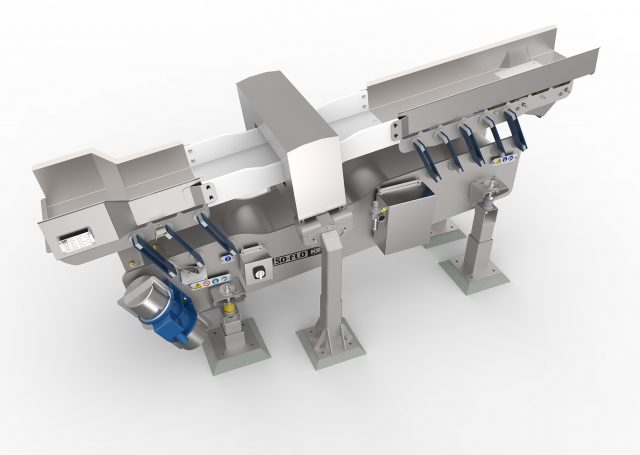Key Technology releases an Iso-Flo vibratory conveyor for integration with a metal detector to inspect bulk foods on processing and packaging distribution lines.
Recently upgraded with the latest sanitary design features, this machine combines three conveyor bed sections – a stainless steel infeed, a non-metallic section that passes through the metal detector’s aperture and a final stainless steel section with a reject device.
Each system can accommodate the customer’s preferred metal detector and aperture size.
The infeed section can incorporate a screen capability to scalp or remove fines, small particles or water, if needed.
Reject device options include a pneumatic gate within the shaker bed that opens and closes or a slide chute at the discharge of the shaker bed that switches direction if metal contamination is detected.
The stainless steel conveyor beds feature a standard rotary polish within the product contact zone or one of several optional finishes to satisfy the needs of each customer. Compared to a typical 2B mill finish, the rotary polished finish reduces bacterial attachment and biofilm formation.
Standard oil-free drives, elastomer isolators, scalloped flat bars, patented stainless steel ground arms and minimal laminations maximize equipment hygiene and help meet rising sanitary standards and regulatory requirements.
Unlike plastic or fabric belt conveyors with hidden surfaces that can trap bacteria, Key’s vibratory solutions present sanitary bed surfaces that are easy to clean without belting material, drive or discharge pulleys and bearings, drive belts or sprockets.
The machine is ideal when inspection is needed for frozen fruits and vegetables at the discharge of the freezer and for blanched fruits and vegetables prior to canning, as well as for frozen meat and poultry, shredded cheese and other applications.
The Iso-Flo conveyors use independent, frame-mounted drives and spring arm assemblies that distribute energy equally to all parts of the conveyor bed in a controlled natural-frequency operation.
The vibratory motion is contained, creating no noise or interference that could trigger the metal detector to a false reject.










